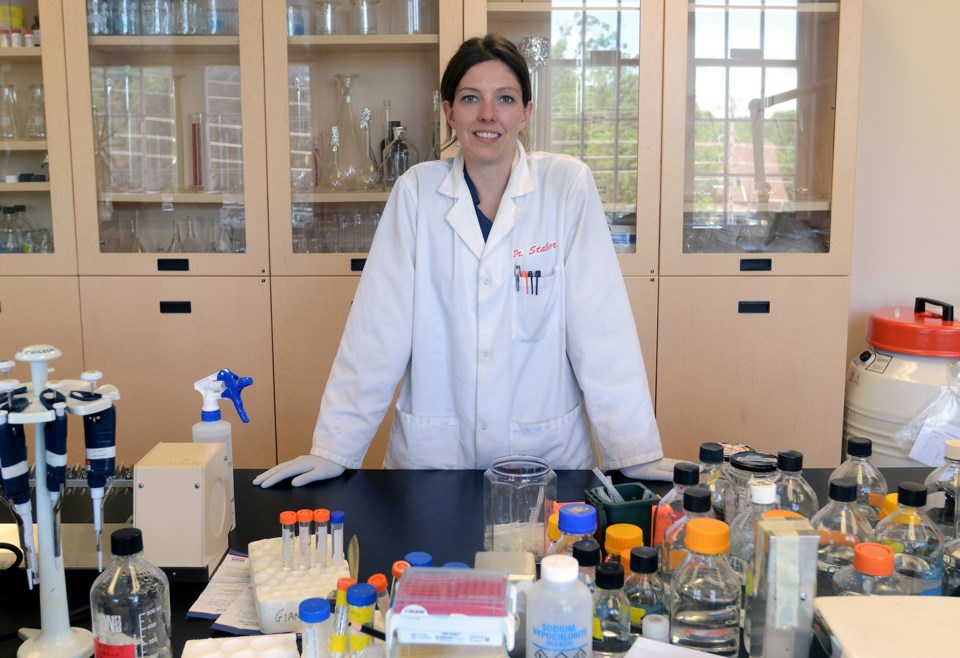A University of Guelph researcher is looking into ways of spaying and neutering cats and dogs without surgery.
Dr. Leanne Stalker, a post-doctoral researcher at the Ontario Veterinary College, is looking at ways to sterilize animals at the cellular level. Hopefully, one day animals could be spayed and neutered by a simple injection rather than surgery.
"Essentially what we're doing is investigating a method by which we can improve sterility control in companion animals: coming up with a surgical-free method for spaying and neutering animals," said Stalker.
"It's a nice project and it's a problem, it's something that people understand is a problem and we have the potential to help come up with a solution that would not only help animals and owners, but maybe have societal impact as well," said Stalker, an Ottawa native who did her undergraduate work at the U of G and doctoral at McMaster before returning to the Ontario Veterinary College.
While such a breakthrough would have potential benefits across the board, the target animal population is in Third World countries, where overpopulation of domestic animals is a widespread issue and leads to huge numbers of animals being euthanized.
"Pet overpopulation is a problem world wide, but it is especially presents a problem in Third World countries where surgical options and financial means are extremely limited," Stalker said.
On a more local level, such technology could help avoid surgery and also make spaying and neutering less costly, potentially increasing chances of adoption from humane society's and other rescue facilities.
In layman's terms, Stalker's research involves affecting that part of the animal's cells that leads to the creation of eggs and sperm. One of the big challenges the research faces is affecting only that one function and not affecting anything else.
"Ideally, an injection that would target only molecules involved in fertility, looking to do good without any harm," she said.
"Essentially we want little to no risk, with positive gain, and we want something exceptionally specific with no off-target affects."
Stalker's research is being funded through a $260,000 Michelson Grant from the Found Animals Foundation. She has applied for a second grant to continue the work beyond the initial two years.
Other scientists in North America were given similar grants and Stalker said there is competition to try and find a breakthrough first.
"There's always competition in science. But there's cooperation too," she said.
Given the research's early stage, none of Stalker's research is done on live animals. She uses cells taken from spayed and neutered animals at local clinics and the humane society.
While the research is in its infancy, Stalker hopes one day to play a role in creating a cheaper, more humane and permanent way of controlling the animal population.
